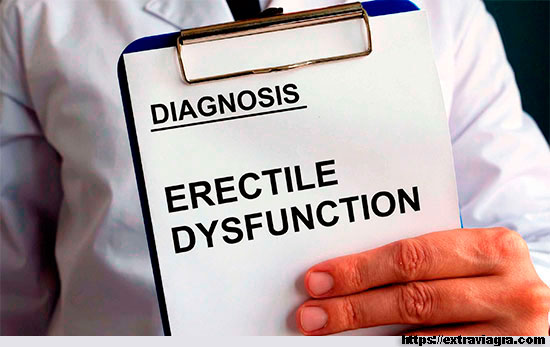The term “premature ejaculation” throughout the twentieth century and still refers to the subject of discussion in modern andrology and sexopathology.
The International Society for Sexual Medicine (ISSM) defines this copulatory disorder: “Premature ejaculation is a male sexual dysfunction that is characterized by:
- always or almost always by ejaculation before penetration of the penis or during the first minute from the beginning of sexual intercourse during the first sexual experience (primary form) or a significant decrease in the time of intravaginal delay of ejaculation to 3 minutes or less (acquired form);
- the lack of the ability to delay ejaculation during sexual intercourse always or almost always;
- the presence of a negative impact on the interpersonal relationships of partners in the form of anxiety, frustration and avoidance of coitus.
It is noteworthy that this definition applies only to vaginal sexual contact in heterosexual partners.
According to ICD-10, premature ejaculation (code F52. 2) is the inability to control ejaculation to the extent that is sufficient for both partners to receive satisfaction from sexual intercourse. This definition is more based on a subjective assessment of the quality of coitus within a couple.
Additionally, the following forms of early ejaculation are distinguished – variable and subjective. Persons with a variable form only sometimes note problems with ejaculation, but this fact should be perceived as a natural feature of a man’s sexuality. In the subjective form, as a rule, complaints about early ejaculation are noted, while the value of VISAS remains within the normal range. It should be understood that the development of this form is based on the psychological and cultural characteristics of the individual.
Premature ejaculation: Epidemiology
Information about the prevalence of premature ejaculation (PE) in the population is the cause of a lot of controversy in the urological community. The lack of a single definition, classification, and optimal criteria for sampling patients with PE led to significant variability in statistical data.
E. Serefoglu et al. the prevalence of 4 forms of PE was studied in 1296 male patients (average age 41.9±12.7 years). The frequency of occurrence of PE was 20%. Separately, for the primary, secondary, variable and subjective forms, this indicator was 2.3, 3.9, 8.5 and 5.1%, respectively.
In the study of J. Gao et al. 3016 men took part and this indicator was higher than in a similar study by E. Serefoglu et al., and amounted to 12.3; 18.7; 44.9; 24.8%. It was noted that men with a secondary form of PE most often belonged to the older age group, had a large body mass index, somatic diseases, and also suffered from nicotine addiction. The frequency of occurrence of PE in them exceeded 25.8%.
The prevalence of primary and secondary forms of early PE in the general population is 5%. This indicator is consistent with previously published epidemiological data, which states that about 5% of men have a VIZ of less than 2 minutes.
Treatment of premature ejaculation
Psychotherapy/behavioral therapy
The main tasks of psychotherapy for men with PE are: 1) development of skills that allow for further ejaculatory control; 2) elimination of interpersonal problems of partners. Treatment can be carried out both individually and in a group.
The most well-known and used methods of behavioral therapy include “compression technique” and “stop-start technique”.
In the first case, the partner performs a sufficiently strong compression of the glandular part of the penis at the moment immediately preceding ejaculation (the woman puts her thumb on the bridle of the penis, and the index and middle fingers-on the coronal furrow and under it, on the opposite side of the penis). For 4 seconds. the partner squeezes the penis hard, and then abruptly releases it.
With the “start-stop” technique, the prolongation in time of the moment of ejaculation is achieved by stopping frictions at the first urge to ejaculate. After a pause, it is possible to continue coitus until the next sensations of the upcoming ejaculation appear.
To date, there are 3 publications that allow you to objectively evaluate the results of this type of treatment. In the work on the topic psychotherapy/behavioral therapy of PES. Althof et al. we came to the conclusion that the effects of behavioral therapy in patients with accelerated ejaculation are inconclusive and contradictory. A similar conclusion was reached in their work by S. Fruhauf et al.

For people with a variable form of PE, just a consultation with a urologist is enough. The doctor needs to explain to the patient that his case does not relate to pathology. After an unsuccessful attempt to convince a patient with a subjective form of PE to the contrary, it should be recommended to seek help from a psychotherapist.
Unfortunately, there is little data in the modern literature that can be used to judge the above methods of treatment, and the available publications do not meet the requirements for the design of studies (a small sample of patients, differences in the definitions of PE).
Pharmacotherapy
Modern pharmacotherapy has wide opportunities for the correction of PE. It includes the use of such groups of drugs as local anesthetics, SSRIs, phosphodiesterase inhibitors of type 5 (for example, Viagra or dopoxetine) and a-blockers.
Local anesthetics
Since an increase in the sensitivity of the glandular part of the penis plays a key role in the development of the primary form of PE, the use of local anesthetics is proposed to reduce sensory perception.
External use of gel, cream, spray based on lidocaine, prilocaine and benzocaine is the most long-standing method of drug treatment. When using them, it is worth remembering that they can cause local side effects in the form of a decrease in penile sensitivity, ED and allergic reactions on the skin.


